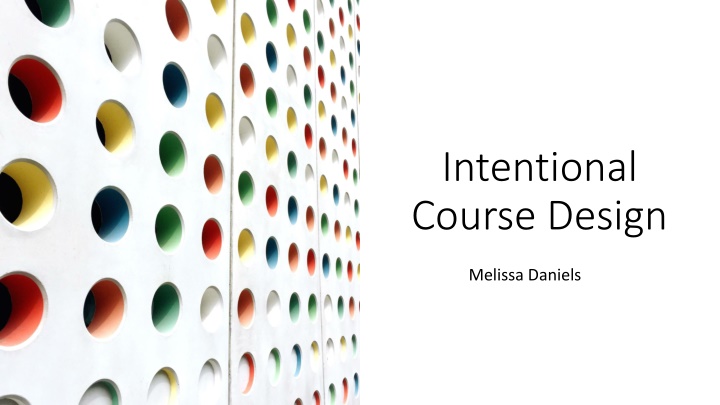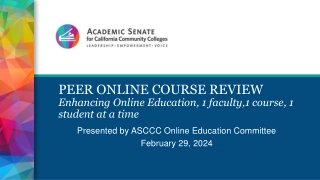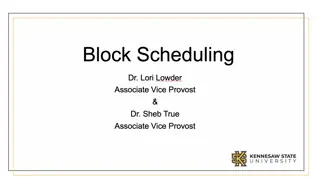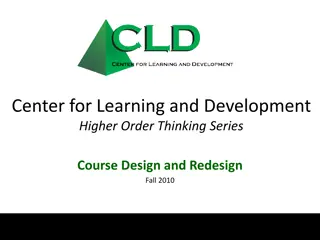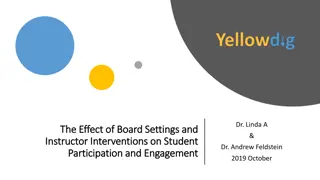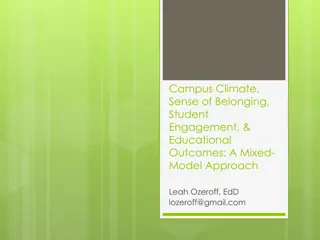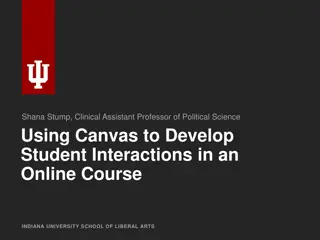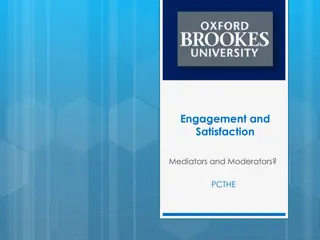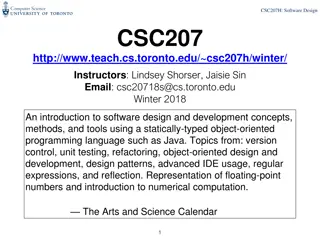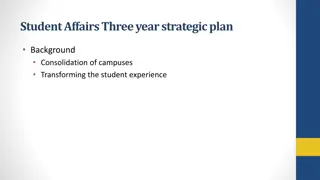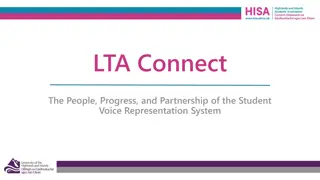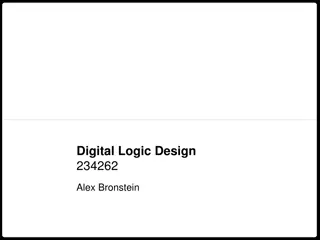Enhancing Student Engagement through Course Design
Strong course design is crucial for fostering student engagement and reducing instructor workload. By creating clear learning objectives, selecting relevant content, and developing effective teaching methods, instructors can craft courses that lead to meaningful learning experiences. This comprehensive guide explores the major components of course design and offers practical steps for educators to create impactful learning environments.
Download Presentation

Please find below an Image/Link to download the presentation.
The content on the website is provided AS IS for your information and personal use only. It may not be sold, licensed, or shared on other websites without obtaining consent from the author.If you encounter any issues during the download, it is possible that the publisher has removed the file from their server.
You are allowed to download the files provided on this website for personal or commercial use, subject to the condition that they are used lawfully. All files are the property of their respective owners.
The content on the website is provided AS IS for your information and personal use only. It may not be sold, licensed, or shared on other websites without obtaining consent from the author.
E N D
Presentation Transcript
Intentional Course Design Melissa Daniels
The big question were addressing today: How can the act of course design help with student engagement, and also lead to less work for instructors during the semester?
Why is strong course design so important? Strong course design gives a lot more intentionality to your class students know their expected outcomes from the beginning. Helps narrow down content to what students REALLY need to know in order to be proficient in your course. Easier to create relevant assessments and activities that lead to more in-depth learning. Student engagement increases because they can see the end goal and the why behind everything they re doing!
Major components to consider when designing a course, in order: Create learning objectives. Determine course content. Develop teaching methods and tools. Determine how you will evaluate student learning. Select text(s) and other materials. Define course policies. Develop the course schedule. Write the course syllabus. Refine the course design.
Step One: Create Learning Objectives Learning objectives will clarify what you want students to learn and accomplish by the end of the semester. Generally, you should have 4-8 learning objectives for your course, regardless of delivery, mode, or location! These should go on your welcome page, so students can see right away what they should know by the end of the term it gives them more purpose entering the course.
Questions to ask yourself when writing objectives: What do you want your students to remember from your course in 5-10 years? How should taking your course change students? What skills should students gain in this course? Are there connections to other courses in the discipline? If students are majoring in this topic, how does the knowledge in your course support what they ll be learning next in the program?
Step two: Determine Course Content Select the major topics and determine the order in which you will teach them. First, select the main topics to be covered. How do they align with your learning objectives? Then, cut down/refine your initial list of topics. Look at your learning objectives again. What content do students ACTUALLY need to know in order to hit those course goals? *Important to remember: The textbook is NOT the curriculum*
Step two: Determine Course Content Determine course structure and arrange topics in a logical order. Consider the following questions as you re organizing your topics: Can you organize topics according to a theme or storyline? Do you need to teach certain skills initially and then discuss applications? Do you want to introduce particular theories before illustrating them with specific examples or problems?
Step three: Develop teaching methods and tools Once you have determined learning objectives and content, think about how you ll present the content. Select and/or develop teaching methods and tools that are 1)appropriate for the size of the class and 2) consistent with learning objectives. Whenever possible, use a variety of approaches how can you regularly engage with students? Think about regular and substantive interaction! Plan to use teaching methods that will require and measure student learning
Step three: Develop teaching methods and tools Consider the following questions/suggestions: What is your teaching style? How will you apply or adapt your style to suit the learning objectives, the size of the class, and the types of students who are likely to enroll? What types of teaching methods will best fulfill your learning objectives? When deciding about technology use, identify specific goals that tech will help you reach how will you integrate this technology? How are you using video recordings in your classroom?
Step four: Determine how you will evaluate student learning Plan assessments (assignments, exams) The evaluation MUST go hand-in-hand with learning objectives With that same train of thought, homework and class activities leading up to the exam must include questions that require the same skills that will be on assessments.
Step four: Determine how you will evaluate student learning Questions to consider: Do the assignments reflect and help achieve learning objectives? Do exams and quizzes reflect learning objectives? Will the students have an opportunity to acquire and practice the skills required for exams and major assignments?
Step five: Select text(s) and other materials Decide whether the learning objectives will be best met by using a published text or a course reader that compiles material published elsewhere. Take cost into account: could you potentially use an open educational resource? If you re interested in looking into free resources, contact Cyd Dyer, the librarian, who can point you in the right direction there will also be mini-sessions this month about accessibility to free resources you could be using!
Step six: Define course policies Determine how you will grade all required work, including assignments, papers, exams, and, if applicable, attendance/participation It is strongly recommended to have your gradebook set up the way you want it BEFORE the semester begins much less of a headache! Decide ahead of time how you will deal with issues of tardiness, attendance problems, late work, and requests for extensions or rescheduling exams. Develop strategies for preventing and responding to plagiarism and cheating.
Step seven: Develop the course schedule Allow time for active learning to occur during class, and time for students to complete major assignments and prepare for exams Step eight: Write the course syllabus Step nine: Refine the course design Spend some time reflecting over what your course looks like As you plan and revise courses, remember the importance of teaching core concepts and critical thinking skills don t focus solely on content!
